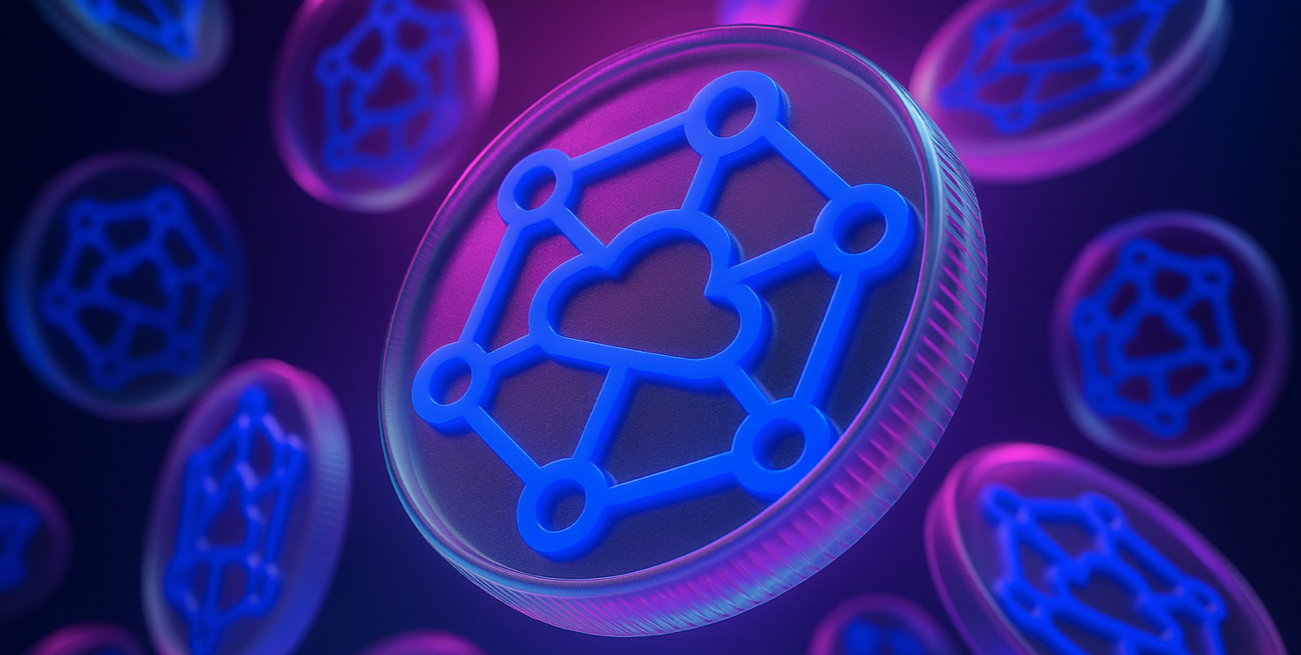
The next evolution of STORJ tokenomics: Introducing buybacks and staking to stabilize network supply and fuel network growth.
The distributed storage sector stands at a critical juncture. While decentralized networks promise to revolutionize data storage, many struggle with driving network demand and token economics fail to align network growth with token value. Today, Storj addresses this challenge head-on with a comprehensive tokenomics model update designed to create sustainable value for the ecosystem's most committed participants.
This announcement marks the beginning of a two-phase transformation that introduces market driven mechanisms to lockup token supply while building a foundation for long-term contributor rewards. The changes represent more than technical adjustments. They signal a strategic evolution toward a more robust and value-aligned network economy.
Why now?
The number one metric for DEPIN networks is demand. Without demand from users willing to pay for the utility of the service a DePIN network provides, the network will collapse.. Demand for the services Storj provides was up 7x YoY at the end of 2024 and has increased another 30% since the start of the year. That growth increases the need to grow the Storj network while maintaining the stability, high performance and durability customers and users expect. That is why Storj is making a new round of updates to the network tokenomics to help ensure that outcome.
Phase 1: Buyback and smart contract funding.
Beginning in July 2025, Storj will initiate a structured buyback plan targeting a percentage of the monthly STORJ token payouts from the open market. The program will launch at 5% of monthly payouts for June 2025, with flexibility to adjust as network demands and market conditions evolve.
The tokens repurchased will be deposited into a transparent holding location—the publicly accessible wallet 0x06177A8C93535b342321E9a5984560b4E37c2D43—in preparation for the launch of the phase 2 staking smart contract. No staking or new reward distributions will occur during this preliminary phase.
Strategic rationale: Aligning growth with value.
The decision to implement buybacks and staking stems from a fundamental recognition that network growth should translate into tangible benefits for ecosystem participants. As the Storj network expands its storage capacity and user base, the token model must evolve to more efficiently reward network participants for providing long-term, stable supply.
Traditional token models often struggle with the disconnect between network success and token performance. Storage networks, in particular, face unique challenges where increased adoption doesn't automatically align with the token reward mechanism.
The dual approach of establishing a reserve for staking fulfills several strategic objectives. The staking reserve is intentionally derived from network rewards, while providing sustainable, value-backed incentives for long-term network participation.
Phase 2: Staking and reward distribution.
After an initial accumulation period, the program will transition to Phase 2, introducing a smart contract staking mechanism expected to launch several months after phase 1 begins.
Storj Node Operators (SNOs) will be able to stake STORJ tokens directly into the contract. Storj is currently developing the mechanism to determine how to redistribute the staking pool back to the stakeholders. The structure developed will be designed to reward long-term commitment and avoid the pitfalls of short-term staking behaviors.
The model will incentivize sustained engagement and provide a clear, predictable path to earning staking rewards. No new tokens are created for distribution. Instead, rewards are funded entirely by the phase 1 buyback reserves, ensuring a closed-loop system grounded in real network activity. Storj anticipates the current held amount system will be folded into the new staking mechanism.
Technical implementation and community feedback.
The development team is taking a measured approach to Phase 2 implementation, prioritizing technical robustness and regulatory compliance over rapid deployment. This careful preparation includes extensive smart contract auditing, legal review, and community consultation to ensure the staking mechanism meets both technical and regulatory requirements, while also achieving the goal of incentivizing long-term network participation.
Community feedback plays a crucial role in shaping the final implementation details. The Storj community forum serves as the primary venue for discussing technical specifications, reward parameters, and governance mechanisms. This collaborative approach ensures that the staking program addresses real community needs while maintaining technical excellence.
The emphasis on legal and technical readiness reflects the complex regulatory environment surrounding staking rewards. By addressing these considerations upfront, Storj aims to create a sustainable program that operates within regulatory frameworks while maximizing value for participants.
Next steps and timeline expectations.
Phase 1 implementation begins immediately with the next regular node operator payout. Regular reporting will provide updates on buyback volumes and staking reserve accumulation. These reports will serve as key metrics for evaluating the program's impact on token economics.
Phase 2 development continues with expected community consultations throughout the coming months. Technical specifications, reward parameters, and governance mechanisms will be refined based on community feedback and regulatory guidance.
The Storj team has committed to transparent communication throughout both phases, with regular updates in the community forum and on the @Storj feed on X. The STORJ token website will continue to be the place to find relevant educational information and news on STORJ. This ongoing dialogue ensures that the token model evolution remains aligned with community needs and expectations.
The introduction of buybacks and staking reserves marks a significant evolution in Storj's approach to token economics. By creating direct links between network success and token value while rewarding long-term participation, these changes position the Storj network for sustainable growth in the decentralized storage landscape.
